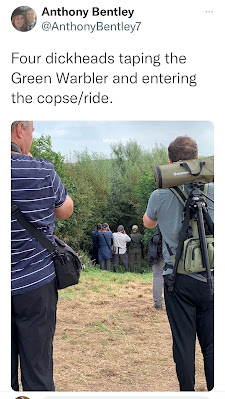Sometimes you just need an excuse to get away from the desk. It was glorious outside, at least it looked to be from the office, and definitely not a day to be stuck in.
Thankfully an excellent local bird provided the excuse. WILSON'S PHALAROPE's are American waders that turn up most years in the UK, albeit they seem scarcer these days. They're also really lovely birds and hard to resist (as are all 3 types of phalarope). I've seen several in the UK, but none for a long time and probably not since the early 90s. So when one was found at Burton Mere Wetlands RSPB reserve mid-morning I was easily tempted and left the office around 2pm.
On arrival I headed to the Bunker Hide where the bird was on show immediately, albeit at about 200m range and slightly in to the sun. Still, the views were good enough. It fed along an island edge, weaving between Black-tailed Godwits and various eclipse-plumaged wildfowl.
I'd forgotten how charismatic these birds are, with completely different feeding action to the other phalaropes. They feed more like typical waders and so mostly remain on the shoreline, stretching with an odd clock-work like slow motion movement to grab food. Ace.
Given I was here, it seemed sensible to wander round to the opposite side of the reserve to the old Inner Marsh Farm scrape. I'll admit to mainly being interested in seeing a possible Category D tick, but there was a good selection of birds there. I settled in at the shiny new Border Hide, thankfully with only a couple of other people in there.
Whilst scanning the birds, I picked-up the phalarope as it dropped in to a ditch behind the scrape and swan round for a few minutes before flying again, eventually dropping on to one of the closest islands. Excellent!
 |
| Bottom two by Mike Barth |
 |
| Paul Coombes’ photo |
Also on show here were a fine selection of waders, including around 20 Ruff, 3 Golden Plover and the usual godwits, Lapwings and Snipe.
Of more listing relevance was the single Ruddy Shelduck. Records of this SE European and North African species have historically always been labelled as escapees, but there is now pretty clear evidence that many UK records originate from a thriving feral population in the Low Countries. Every summer there are more birds seen in the UK, including multiple small flocks, The timing of our records fits neatly with peak moult gatherings in Holland too, so the link is obvious. The BOU are apparently reviewing the status in the UK, but an upgrade to Category C5 on the UK list is presumably imminent (C5 is defined by the BOU as "Vagrant naturalized species – species from established naturalized populations abroad, e.g. possibly some Ruddy Shelducks Tadorna ferruginea occurring in Britain. There are currently no species in category C5"). A listing upgrade seems inevitable. Of course I've seen Ruddy Shelducks before, but the only ones that I feel had any credentials were part of a large influx way back in 1993. Nice to see another, although the credentials of any individual birds are always unknown and the accompanying Greylag Geese and 7 Egyptian Geese (the largest number I've seen in Cheshire) didn't help with the wild-vibe. But that's wildfowl for you.
2 Cattle Egrets followed a tractor in the adjacent field, and a couple of Little Egrets fished in front of the hide. A cracking couple of hours.
Given my luck appeared to be in, I thought I'd chance it further and head 45 minutes down the road in to Gronant in Flintshire, where a SQUACCO HERON has been present for the last ten days or so, albeit elusively. I parked at the St. Marys Touring Park caravan site it was clear that this would not be an easy bird to see if it was not on the adjacent fishing pit ('Little Pool Wood). There were numerous densely vegetated ditches which are impossible to view, and then the other pond at 'Big Pool Wood' around 400m to the north across fields. There was no-one else there so I set-off to search. No sign on the fishing pit, so I walked the ditches along field boundaries and up to Big Pool Wood. Nothing. I did another circuit of the ditches and the fishing pit, nope. I was about to give up but decided to jump a gate and walk a different ditch. 50m in to the field the ditch opened up to a cattle drinking area which I thought looked perfect, and at that moment it flushed up and headed back towards the fishing pit showing it's gleaming white wings. I quickly found it back on the pit and enjoyed excellent views as it hunted in the evening sunshine. Another species I've not seen n the UK since the 90s. Splendid.











